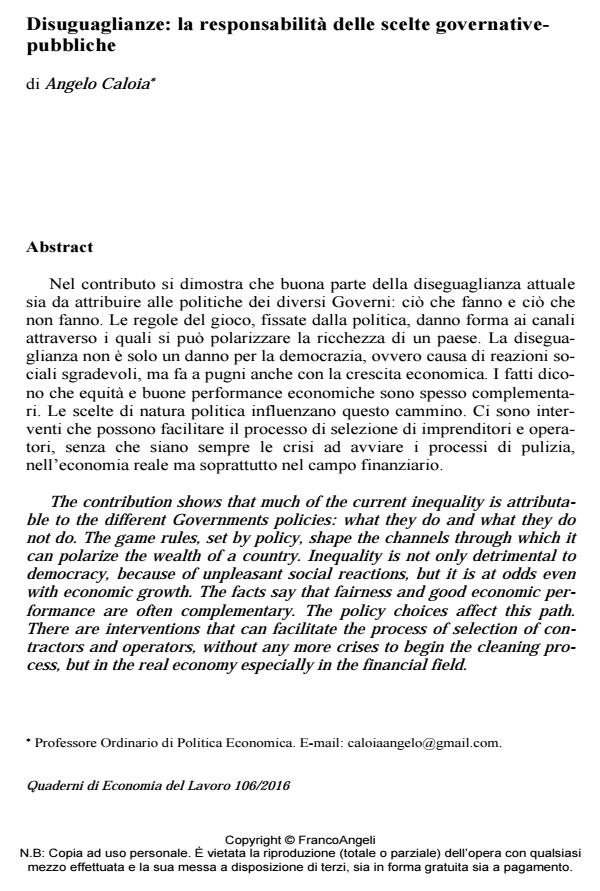Disuguaglianze: la responsabilità delle scelte governativepubbliche
Journal title QUADERNI DI ECONOMIA DEL LAVORO
Author/s Angelo Caloia
Publishing Year 2017 Issue 2016/106
Language Italian Pages 25 P. 141-165 File size 240 KB
DOI 10.3280/QUA2016-106008
DOI is like a bar code for intellectual property: to have more infomation
click here
Below, you can see the article first page
If you want to buy this article in PDF format, you can do it, following the instructions to buy download credits

FrancoAngeli is member of Publishers International Linking Association, Inc (PILA), a not-for-profit association which run the CrossRef service enabling links to and from online scholarly content.
The contribution shows that much of the current inequality is attributable to the different Governments policies: what they do and what they do not do. The game rules, set by policy, shape the channels through which it can polarize the wealth of a country. Inequality is not only detrimental to democracy, because of unpleasant social reactions, but it is at odds even with economic growth. The facts say that fairness and good economic performance are often complementary. The policy choices affect this path. There are interventions that can facilitate the process of selection of contractors and operators, without any more crises to begin the cleaning process, but in the real economy especially in the financial field.
- Public Policy’s Role in Achieving Sustainable Development Goals Valerio Ferrero, pp.206 (ISBN:9781668489031)
- Restorative Justice and Practices in the 21st Century Valerio Ferrero, pp.175 (ISBN:9781668461457)
Angelo Caloia, Disuguaglianze: la responsabilità delle scelte governativepubbliche in "QUADERNI DI ECONOMIA DEL LAVORO" 106/2016, pp 141-165, DOI: 10.3280/QUA2016-106008